ABSTRACT
Earth’s atmosphere and magnetosphere deflect and absorb the majority of harmful radiation traversing space; however, once outside Low Earth Orbit (LEO), payloads are exposed to Galactic Cosmic Rays (GCR) and Solar Particle Events (SPE). While humans possess capabilities that hardware does not, we are uniquely vulnerable to radiation. Detrimental effects range from nausea and dizziness brought by intense, short-term doses to increased cancer risk and impaired cognitive function associated with chronic exposure.
This paper aims to explore the use of human waste (feces and urine) as radiation shields in a comparative study of urine vs. water and hydrated vs. dehydrated feces. GCRs contain particles with energy orders of higher magnitude than SPEs, which makes them impractical to shield against. Conversely, SPEs occur with higher frequency and at a lower level that is practically attenuated. To this end, an SPE surrogate was validated and exposure (Counts) on the leeward side of the respective shields was measured.
Counts per Minute (CPM) were obtained by applying a multiplicative factor to Counts. As expected, CPM behind a urine shield did not differ from CPM behind a water shield (t-test, p < 0.05). Similarly, no difference in leeward CPM was found between hydrated and dehydrated feces shields (t-test, p < 0.05). The lack of differences between water and urine may be a result of urine being primarily composed of water. While fecal matter is made primarily of water as well, the solid content likely masks the loss of water’s attenuation properties.
MATERIALS & METHODS
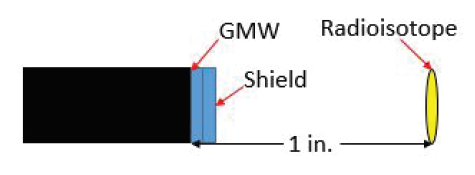
Figure 1: RI surrogate validation schematic. The 0.008 in. shield (both orientations) is adjacent to the GMW that is 1 in. from the RI (Co-60, Cs-137 and Po-210).
The shielding scenario used for RI surrogate verification was a comparison of Aluminum-High Density Polyethylene (Al-HDPE) and High Density Polyethylene-Aluminum (Slaba et al., 2011). Two layers of 0.002 in. thick Al sheeting were combined with one layer of 0.004 in. thick HDPE to create a 0.008 in. thick Al-HDPE shield that was placed adjacent to the GMW on a Vernier Digital Radiation Monitor (Fig. 1).
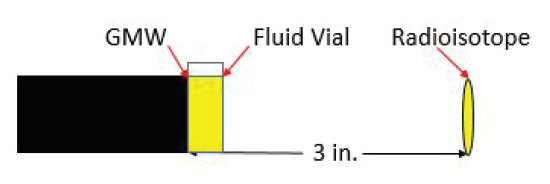
Figure 2: Urine/Water test schematic. The fluid-filled vial stood adjacent to the GMW, and the RI 3 in. from the GMW.
The validated RI was placed three in. from the GMW and the vial of urine/water stood adjacent to the GMW. The vial was constant through all liquid tests, allowing analysis of CPM without compensation for the glass walls. The vial was filled with water and a 10 min exposure was recorded; the same procedure was followed for urine, which was used within 10 min of sample collection. Both fluids were above the top of the GMW, ensuring complete coverage relative to the RI (Fig. 2).
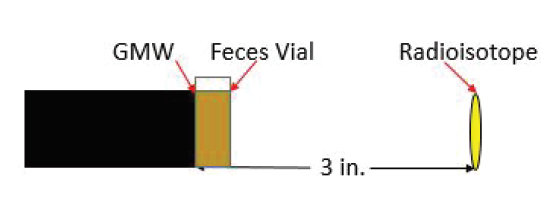
Figure 3: Hydrated and dehydrated feces test schematic. The feces-filled vial stood adjacent to the GMW, and the RI 3 in. from the GMW.
The validated RI was placed three in. from the GMW and the vial of feces stood adjacent to the GMW. The vial was constant through both tests, allowing analysis of CPM without compensation for the glass walls. The vial was filled with feces and a 10 min exposure was recorded. The feces were left in the vial, placed in a vacuum chamber and exposed to pressures of approximately 490 mTorr. After desiccation, the sample was removed from the vacuum chamber and a 10 min exposure was recorded. Both feces levels were above the top of the GMW, ensuring complete coverage relative to the RI (Fig. 3).
RESULTS
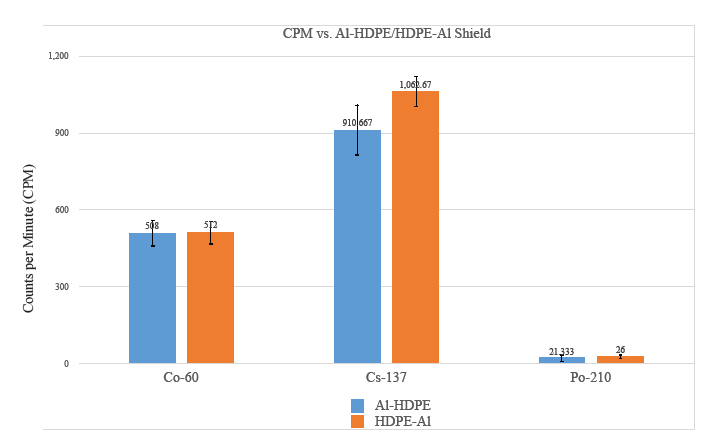
Figure 4: CPM (± S.E.) comparison between Al-HDPE and HDPE-Al shield orientations for Co-60, Cs-137 and Po- 210. Only Cs-137 produced a difference (p < 0.05) in shield effectiveness based on orientation.
Out of the three RIs tested (Co-60, Cs-137 and Po-210), only Cs-137 exhibited a difference between Al-HDPE and HDPE-Al shields (p < 0.05). As shown in Fig. 4, the Al-HDPE orientation reduced CPM on the leeward side of the shield compared to the HDPE-Al orientation. Cs-137, being the only β emitter that mirrored the OLTARIS results (Slaba et al., 2011), positioned it as the RI surrogate for further tests.
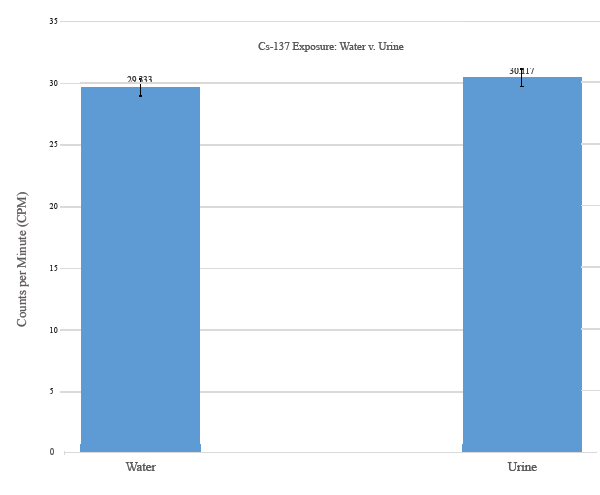
Figure 5: CPM (± S.E.) comparison between water and urine shields (t = 0.87 in.). No difference (p < 0.05) found between CPM on leeward side of shields.
No difference was found between urine and water shields of the same thickness (Fig. 5 – p < 0.05).
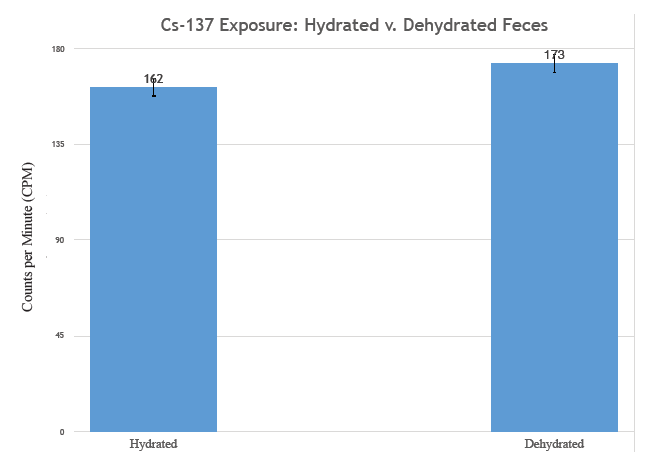
Figure 6: CPM (± S.E.) comparison between hydrated and dehydrated feces shields (t = 0.87 in.). No difference (p < 0.05) found between CPM on leeward side of shields.
No difference was found between hydrated and dehydrated feces shields of the same thickness (Fig. 6 – p < 0.05).
DISCUSSION
This work encompassed the validation of a radioisotope surrogate to simulate SPE particles through comparative testing of radiation attenuation amongst both urine vs. water and hydrated vs. dehydrated feces shields.
The data mirroring behavior predicted in OLTARIS (Slaba et al., 2011) supports the use of Cs-137 as a standin for SPE particles during the subsequent shielding experiments. The lack of difference in shielding effectiveness found between urine and water suggests that urine carries more value in water reclamation operations than in radiation shielding. Given the corrosive nature of brine produced during water reclamation (Jr. et al., n.d.), it is unlikely that the solid components of urine would yield a worthwhile return in the form of radiation shielding.
The lack of difference in shielding effectiveness between hydrated and dehydrated feces suggests that the hydration level of feces should not be considered a significant factor in radiation shielding operations. This result may influence decisions encompassed by the holistic nature of space travel: the moisture contained in feces could be reclaimed and the remaining solid mass integrated into radiation shields, without fear of detrimental influences on shielding effectiveness.
CONCLUSION
There was no difference in radiation attenuation effectiveness between equal thickness shields of urine vs. water and hydrated vs. dehydrated feces. These results suggest that the reclamation of water from human biowaste does not detract from the waste’s potential as a radiation shield.
While Cs-137 was validated as a small scale SPE surrogate, the conclusions reached in this paper may be strengthened by experiments involving higher power sources with greater particle specificity, such as HIMAC (Marc M. Cohen, n.d.).
Source: California Polytechnic State University
Authors: Noah L. Falck